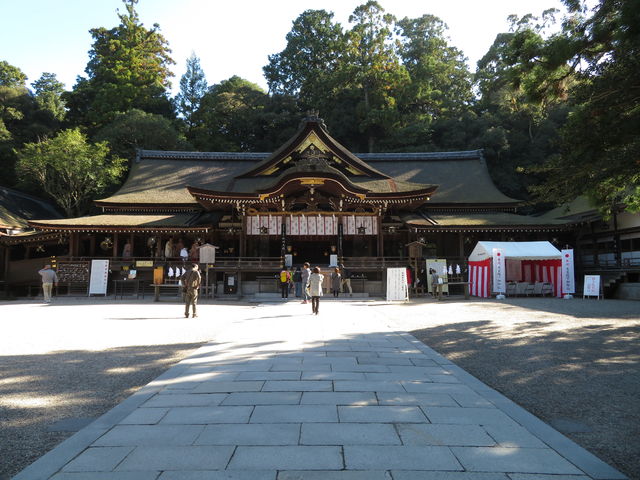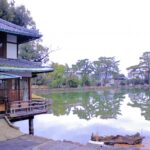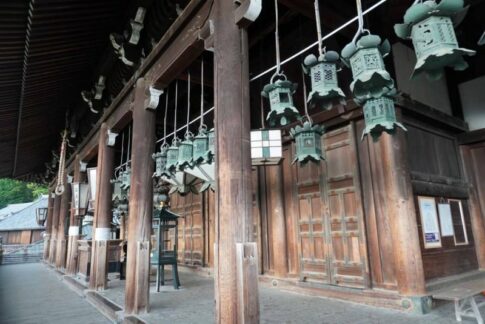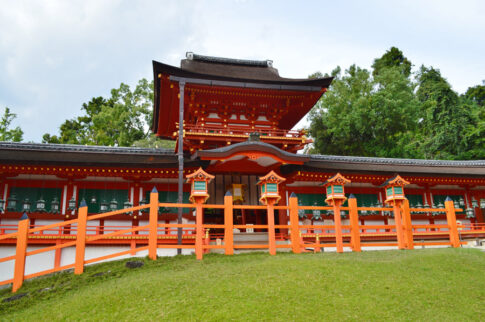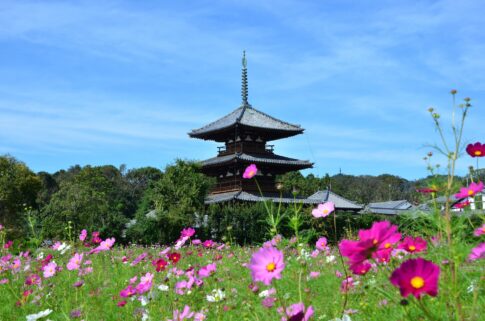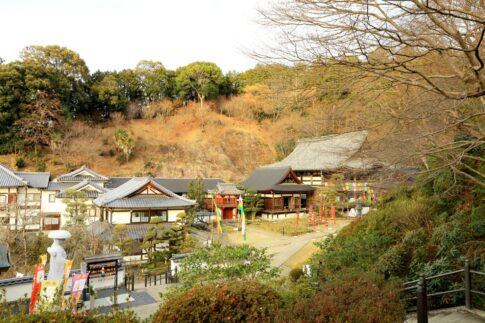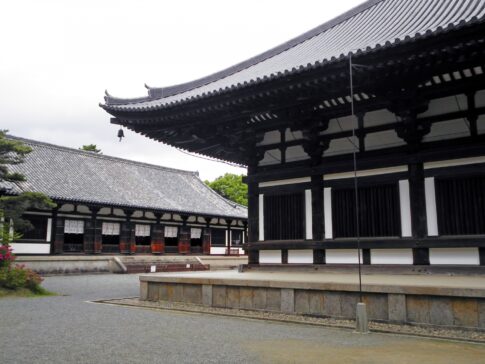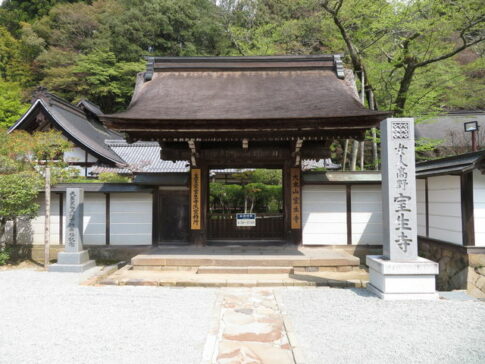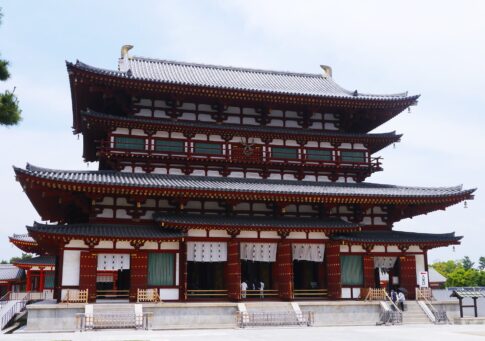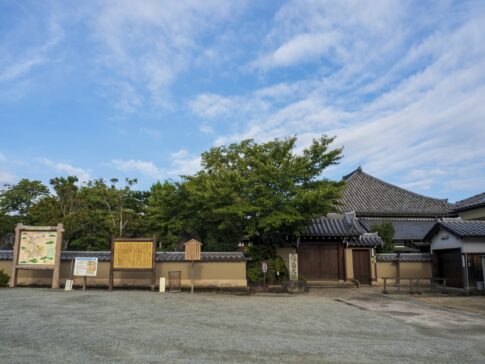What you need to know before visiting Omiwa Shrine
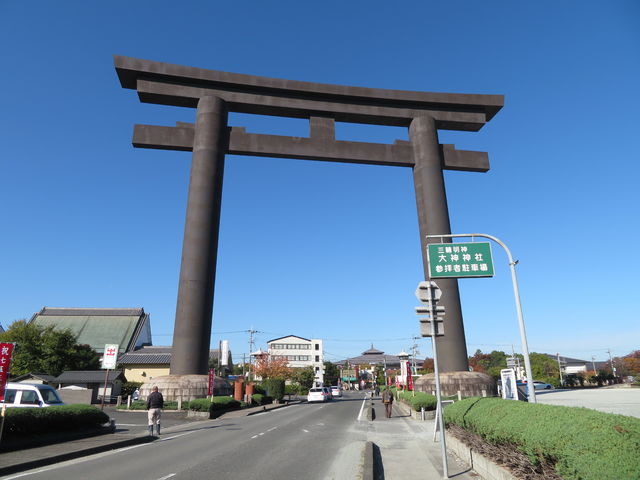
1. History of Omiwa Shrine
The legend of the founding of the shrine is recorded in the Kojiki (Record of Ancient Matters) and the myths of the Nihonshoki (Chronicles of Japan).
According to the Kojiki, Ohmononushi no Okami appeared to Okuninushi no Kami of Izumo and asked to be enshrined on Mount Miwa, saying “I, Aokigaki of Yamato, shall be enshrined on the mountain in the east” to fulfill the creation of the country.
The “Nihon shoki” also recounts a similar legend, in which in a dialogue between the two deities, Ohmononushi no Mikami claimed to be the “Sakimitama” and “Kushimitama” of Okuninushi no Mikami.
As in the Kojiki, he wished to reside on Mount Miwa. According to this tradition, Omotonushi no Mikoto was manifested as another spirit of Okuninushi no Mikoto, and settled down on Mount Miwa.
It is valuable that the mythology clearly describes the tradition of the creation of the shrine, and it is recognized as an ancient shrine among ancient shrines that began in the Kami period, which shows how high the deity Saijin was.
Since the deities of the shrine are settled in the mountain, the shrine has been praying directly to Mount Miwa without a main shrine, which is the way the original Shinto rituals were performed before the shrine buildings were established.
During the reign of the 10th Emperor Sujin, the shrine was revered as a god of nation-building and a guardian deity of the nation.
In the Heian period (794-1185), the O-miwa Festival, the Hanashizume Festival, and the Saikusa Festival continued to be held as festivals of the Imperial Court, and in 859, the highest rank of the deity was given to Shoichi, the first rank in the Jogan Shogan era (859). In the Engishiki (Engi-shiki), the shrine was ranked as a kanpeitai-sha, and later became Yamato-no-kuni Ichinomiya, one of the 22 shrines in the Yamato Province.
In the Middle Ages, Miwa-ryu Shinto spread throughout the country, centering on the Jingu-ji Jingu-ji, Dai-gorin-ji, and Byodo-ji temples, and had a strong influence on the people of Japan.
In the early modern period, the Shogunate granted the shrine territory to Mount Miwa and gave it special protection.
Even today, the shrine is visited by worshippers from all over Japan as the god of nation-building and the guardian deity of all aspects of life, and is bustling with the support of faithful worshippers.
2. Mitsutorii and Worship Hall
The back of the Omiwa Shrine worship hall is a sacred place where even priests are not allowed to set foot, and between the hall and the forbidden area is the Mitsutorii (three torii gates) and Mizugaki (a fence).
The origin of Mitsutorii is unknown, but it is described in an ancient document as “a mystery of the shrine since ancient times,” and has been considered sacred as an alternative to the main shrine.
This torii is also called “Miwa-torii” (meaning “three-ring torii” in Japanese) because it is a unique structure consisting of three Myojin-type torii in a row horizontally.
The central torii gate has a gateway mitobira, and if Mount Miwa is the main shrine, then the Mitsutorii serves as the gateway to the main shrine.
It appears from documents that the hall of worship was built in the Kamakura period (1185-1333), and the current hall was rebuilt in 1664 by the fourth Tokugawa Shogun, Ietsuna Ietsuna.
The white-wooden building with a solid and sturdy appearance is approximately 17 m wide (9 ken in the girder line) and 8 m long (4 ken in the beam line), with a large kohai in front and a hiwada (cypress bark) roof.
The worship hall is designated as a national important cultural property together with Mitsutorii (three torii gates) as a magnificent and grandiose shrine building of the Edo period.
3. Mount Miwa
Mount Miwa is a cone-shaped mountain that is one of the most well-defined of the Aogaki Mountains that surround the Nara Basin.
Since ancient times, it has been worshipped as a divine mountain where the great deity Omotonushi resides, and is mentioned in the Kojiki (Records of Ancient Matters) and Nihonshoki (Chronicles of Japan) as Mount Mimoro, Mount Miwa, Mount Mimoro-dake.
The mountain is 467 meters high, 16 kilometers in circumference, and 350 hectares in area, covered with large pine, cedar, and cypress trees, and every single tree and grass is revered as a place where the gods reside.
The cedars, in particular, were written about in the Manyoshu (Anthology of Myriad Leaves) and many other poetry anthologies, and were considered sacred as “sacred cedars of Miwa.” In later times, cedar balls made from Miwa’s cedar leaves were displayed in front of sake breweries as a symbol of sake brewing.
Also, the mountain is dotted with rocks where divine spirits reside and are called Iwakura, or “rock dwellings,” and are the object of worship. According to an old chronicle of the shrine, the deity Ohmononushi no Okami (Great Mononushi) resides at the top of the Iwakura, the deity Onamuchi no Okami at the middle of the Iwakura, and the deity Sunahikono-no Okami at the bottom of the Iwakura.
In view of the spread of the new type of coronavirus infection, they are still not accepting visitors to Mount Miwa We will announce the resumption of registration on our website as soon as it is decided.
After the reopening, please check the precautions you need to take before climbing Mount Miwa.
4. O-tsuitachi-mairi
On the first day of every month, the shrine is crowded with people who perform the “Tsuitachi-mairi”.
The “Tsuitachi-mairi” is a pilgrimage to express gratitude to God for his blessings in the previous month, and to pray for more blessings in the current month.
On the 1st, “Tsukinamisai” (free to attend) will be held at 10:00 a.m. in the hall of worship, and “Osugi,” a sacred tree, will be offered at the tent on the left side of the hall of worship (200 yen per piece).
Also, on the first day of every month (except January), the “Tsukiji morning market” is held at the automobile purification center (to the right of the second torii gate).
At the morning market, vegetables and flowers grown with great care by the “Hounenkou”, a respectful organization of farmers, are lined up in a row, and the freshly picked vegetables are very popular as they can be purchased at low prices, making it one of the enjoyable parts of Tsuitachi pilgrimage.
Please come to the first day of every month to pay your first visit to the “O-tsuitachi-mairi.
Summary
You can see not only the traditional shrine and the spectacular mountain, Mount Miwa but also experience the ancient Japanese customs.
Please visit there on a first day of month and see O-tsuitachi-mairi!
